A Spider-Man Video Games Retrospective: 'Spider-Man' (PC, 2001)
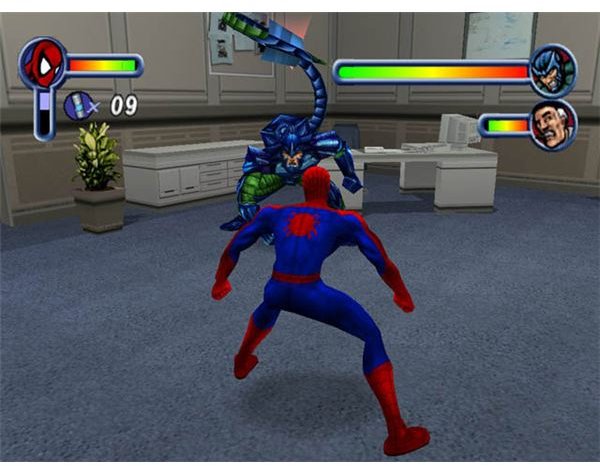
Tangled Web - Spider-Man Video Games
Spider-Man has long been a staple of computer games, with a history of titles spanning over 30 years; the character’s first electronic appearance being 1978 (albeit in a text adventure). The 1990s saw a steady stream of Spider-Man video games on various consoles that were sidescrolling platformers, but it wasn’t until 2000 and the advent of the Playstation that the first 3D Spider-Man game appeared. In 2001
‘Spider-Man’ made its way onto the PC, beginning a renaissance of gaudy pyjama wearing and the begrudging purchases of game pads.
Fortunately, I was already prepared in both cases.
Binnocular Sales Were Most Hurt
‘Spider-Man’ was the first game to accurately portray the character’s exploits as they were in the comic; you swung around the city on web lines, bounded from roof tops, climbed up skyscrapers, saved hostages, wailed on various goons and super villains. All things that were in previous games, but the first time that you were along for the ride, there doing it, thanks to the new technology. The open world of the cities and freedom to swing around scaling and exploring added a depth to the experience, that was missing from previous computer game iterations. Even hampered by the limitations of early 3D as it was, ‘Spider-Man’ is the template which later and more recent Spider-Man games are based on: Open, fully rendered cities, brimming with various tokens of some sort (and the occasional abandoned supervillain lair) to encourage exploration.
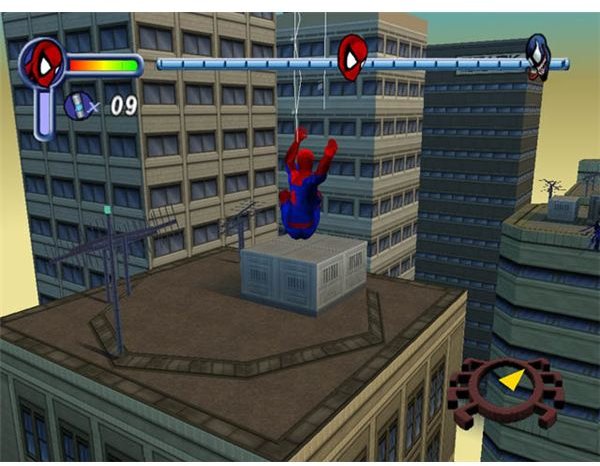
‘Spider-Man’ is essentially a proto-sandbox game, in that while it was filled with lots of wander potential, it wasn’t completely open to the player’s whim both in terms of what could be done during the missions themselves, since it is a level based game, and in that it is not a fully rendered city, which the green mist conveniently hides. Technological limits however are nicely reasoned away by Doctor Octopus’ nefarious plan to cripple sight seeing (and general looking up or down at things from or below a certain height) in New York with his beige smog of short sightedness. Or something.
Namortgage
The game seems to exist in something of its own continuity, heavily based on the comics, but streamlined for easy understanding, which has become something of a staple of the franchise. Every set piece and chapter in the game seems to borrow from one of the well established or notable plot devices and themes from Spider-Man’s long history of stories; the game begins with ‘Spider-Man’ publicly stealing a ‘reformed’ Dr. Otto Octavius’ (Doc Ock’s) latest invention at a science expo… while Peter Parker looks on from the crowd. Being mistakenly wanted by the law is a recurring theme in Spider-Man comics, as is J. Jonah Jameson being under threat from his inadvertent creation, The Scorpion, or Venom’s terrorisation of the Parker family.
Even the eventual finale at Doc Ock’s secret undersea base is a reference to the historic Master Planner story arc. I like to imagine the
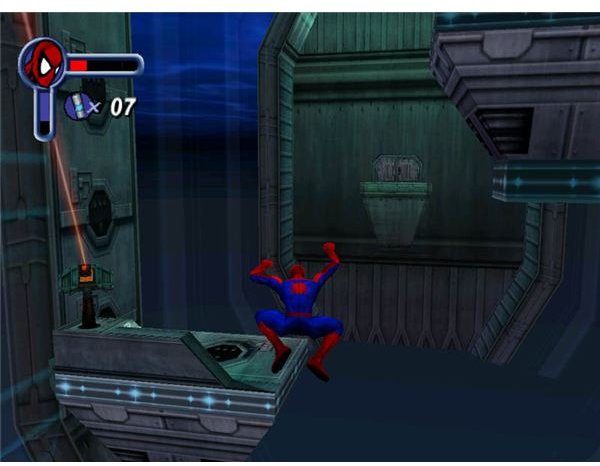
property prices on aquatic lairs reached their all time high after the 1960s and it’s the same lair from that story.
What If… Comics Could Be Read Digitally?!
Each chapter is split into ‘issues’ which does a lot to add to the ovveriding atmosphere of the game being out of a comic book. A brightly coloured comic book occasionally narrated by Stan Lee. Levels are punctuated with various pickups such as comics that you can then view the covers of in the gallery later. Sadly the comics can’t actually be read at all, but if they could, there would be little reason to buy them after so many hours were sank into (spider) tracing their location.
A new feature for the time was the use of alternative costumes, which could be earned along the way, making ‘Spider-Man’ the first Spider-Man videogame (or any game ever) to actively acknowledge the various alternative universe spider-men. Most costumes had their own unique enhancement too, such as invisibility or enhanced strength, or the symbiote costume’s unlimited webbing. This ‘Spider-Men’ concept has since been spun into its own game, though Spider-Man: Shattered Dimensions has yet to be released on the PC at the time of writing.
‘Spider-Man’ also embraced the idea of cheat codes whole heartedly, going as far as a ‘what if’ mode, where basically every level becomes a psychadelic mess. Not exactly true to form there, but amongst the ridiculousness there are some notable cameos, including Ghost Rider and The Watcher. Even absurd cheat modes reference the extended Marvel universe.
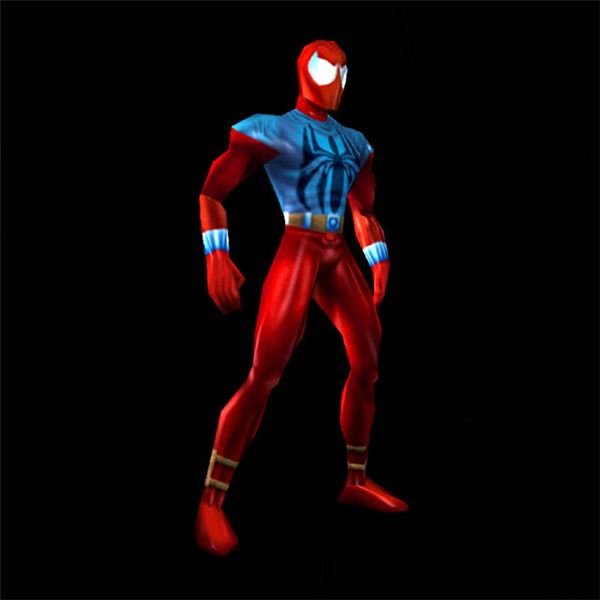
Beige Smog At Night … Octavius’ Delight - Spiderman PC Game
Spider-Man games have a long history of being rather unweildy when it comes to web swinging, which made ‘Spider-Man’ rather refreshing as its system was relatively intuitive if tempremental. Swinging around the city was a high point of the game, but the system necessitated a surface to swing on, so there were times which came down to painstaking targeting of nearby ledges, or desperate leaps of faith in the hope of a usable building in range that wouldn’t end in a deadly plunge into bottomless smog. The camera also could be quite infuriating and disorienting depending on the activity. Its positioning of itself became notably awkward when crawling on the ceiling, when it generally pointed the opposite of where it was desired.
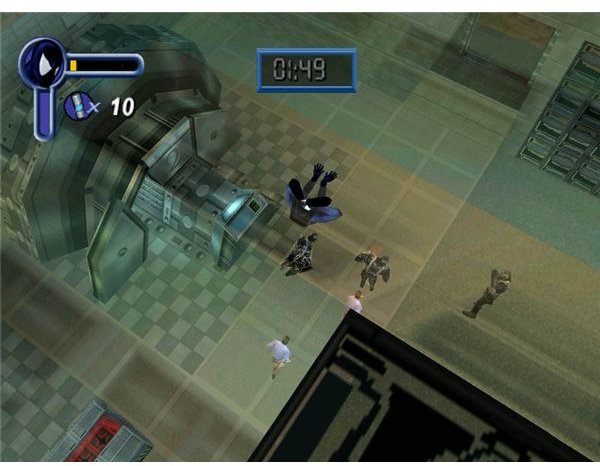
But the very fact that you could even crawl on the ceiling as you saw fit was a huge novelty as well as genuinely innovative, both in and outside of the franchise. The fast zip lining to points as well as the slow upside down descent from ceilings on webbing, just screamed SPIDER-MAN. Touches like that were a big part of what made ‘Spider-Man’ so endearing; it’s trying its very hardest to be a Spider-Man game and actually provide a definitive experience where the player will feel like they took part in a comic book adventure.
Spider-Mobile DLC Now Available! - Spiderman PC Game
The combat is a little limited, though it does work well, and provides the obvious punches, kicks and grapples and basic combinations thereof. More significantly was the webbing, which incorporated various trademark Spidey moves, such as web gauntlets, and the web dome, impact webbing, as well as the more conventional webbing wrap.
While all the controls work together smoothly, they at times, felt altogether too much; not so much that anything was overwhelming to use, but that it seemed like they were too many controls, even though every one of them felt essential. The camera and targeting mode are good examples of this, both necessary functions that wouldn’t be necessary as separate controlled features if each respective feature was more intuitive. ‘Kid mode’ simplified the controls for the younger set, though replica F-15 flight consoles worked
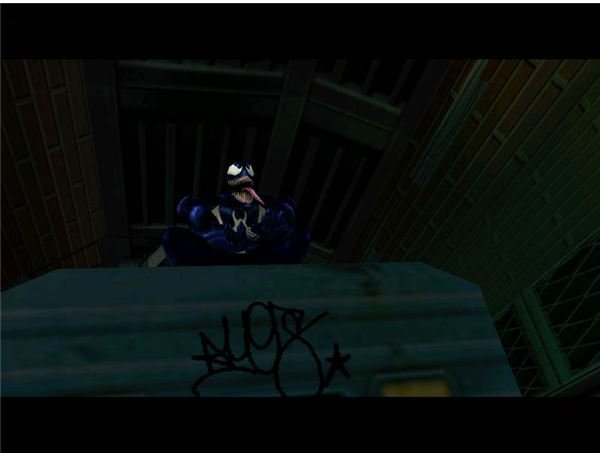
well for those who wished to master the undiluted mechanism.
The ‘Spider-Man’ PC game doesn’t particularly add anything unique to the port, other than crisper visuals. More levels or game modes would have been nice, but clearly that was a pipe dream that never would have come to pass. Sadly this unfulfilled craving led to the hardest affected buying replica Spider-Man costumes and suction pads in bulk. They will be missed.
Brought To You By The Creators Of ‘Indecipherable Gibberish Man’
Overall, the ‘Spider-Man’ PC game was ground breaking for its time; its frenetic, free form play style and constant slavish reverence to the source material completely redefined what could be expected from comic book games as well as set the template for the next decades worth of Spider-Man games that built on the example. It has its flaws, often the game is hampered by the rougher edges of the web swinging and camera, but ‘Spider-Man’ is packed with over the top sensibilities, and a bounding sense of adventure that borders on swash buckling (or it would if the ‘Spider-Man’ PC game featured buckles or swashes). Its happy go-lucky, to the point of nearly being intentionally self parodic.
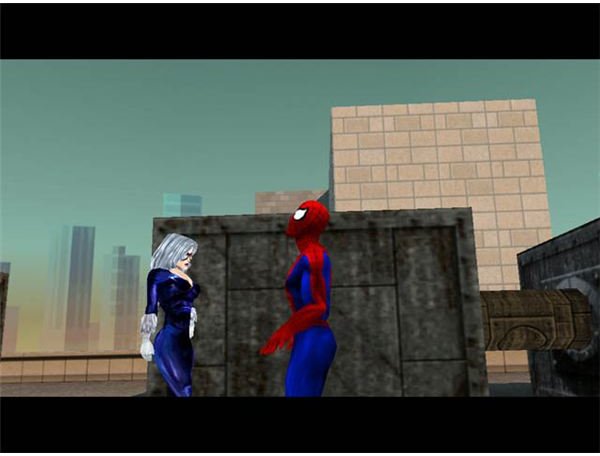
From the catchy strains of the modernised theme tune appropriated from the 60s animation, to the various cameos of other Marvel characters to the admirable commitment to cram in as much Spider-Man related story content and characters (as well as providing something new for fans at the end), quite simply even now, ‘Spider-Man’ is charming, if a bit naive in comparison to later installments of digital web slinging. In some ways ‘Spider-Man’ is the 3D era’s gaming equivalent of the early 60/70s comics, only mercifully without all that weird lingo.
That’s all there is to it daddios, so take a riddle down jive street where all the hip cats and swing shades do their true believing and lime stone sheathing.
Excelsior!
Why will this dirt not wash off?
This post is part of the series: Learning to Sling: A Spider-Man PC Game Retrospective
A retrospective article series that (wall) crawls along the history Spider-Man games on the PC, charting how well they work on the platform and how true they are to the wealth of Spider-Man stories from throughout the years.
